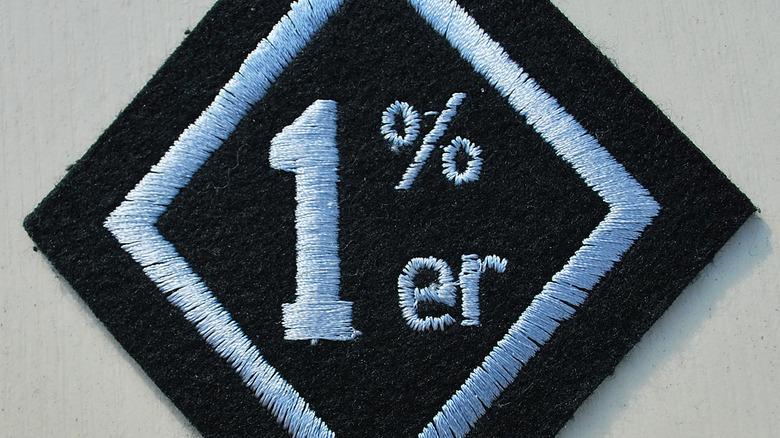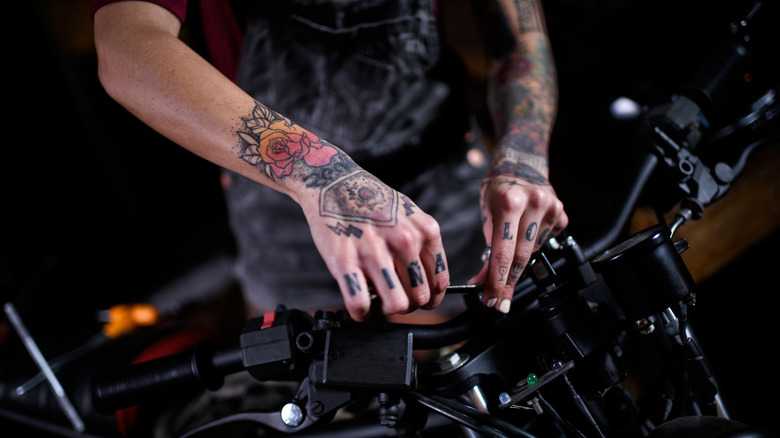What Is A One Percenter Motorcycle Club? Here's What You Need To Know
July 4, 1947, was just another Independence Day for the residents of Hollister, California, a small town that most in the Golden State had never heard of. However, by the time the sun sank beneath the horizon, Hollister would be in headlines across the country. The American Motorcycle Association was holding a racing event, something it did annually prior to World War II, that garnered more than 4,000 attendees. That was twice the small town's population, and the tourists weren't nearly as docile as the residents. Newspapers reported that Boozefighter gang members incited a riot by riding their motorcycles into a bar and damaging city property.
This prompted the president of the AMA to denounce those who rioted and claim that 99% of bikers are law-abiding citizens, while 1% are outlaws. Not only did this real-life event inspire Marlon Brando's movie "The Wild One," but it essentially birthed the 1% biker clubs. These clubs are now labeled as Outlaw Motorcycle Gangs (OMGs) by the U.S. Department of Justice. Its members are so proud of their outlaw status that they often wear a patch that labels them as such.
Unlike the characters in "The Wild One," who have a code of honor and a degree of integrity despite being outlaws, the real-life one-percenters are associated with some of the most heinous crimes known to civilization. There are over 300 of these clubs in the United States alone, the Big Four Outlaw MCs being the Hells Angels, Bandidos, Pagans, and the aptly named Outlaws.
The one percenter hierarchy
The crimes these OMGs commit range from something as petty as running a red light because they simply don't think rules apply to them to something as harmful as murder or drug trafficking. The OMGs are never just one club, either. There are the big ones that everyone has heard about, including the Outlaws, the biggest biker gang in Florida, and the Hells Angels, but those clubs often use smaller clubs to help in various situations. They're what's known as support clubs. Their typical day-to-day activities don't include breaking the law, but they might be called on by a bigger club to help. The support club answers the call because it earns them favor with the big OMG and improves their reputation.
There are also satellite clubs that are often created by members of a larger club as a means to recruit. It's common for satellite clubs to join in on the illegal activities committed by larger clubs. To join an OMG — or any motorcycle club, really — there is a long list of strict rules members must abide by. The rules the Hells Angels live by are nothing short of specific, laying out a very exact riding order when the club is on the road and what members can and can't do while wearing their cut.
Politics between clubs can be tricky. Sometimes the big clubs have alliances with others, while they often have green light orders against some clubs, meaning they will either attack or kill rival club members on sight.

